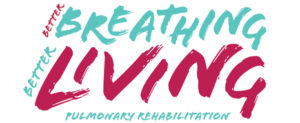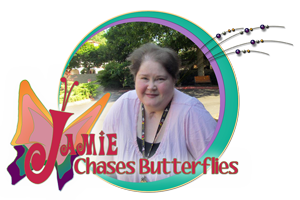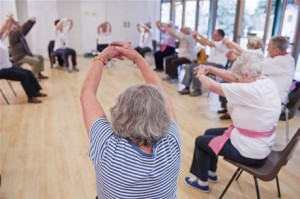Everyone knows that movement (exercise) is important for wellness but what do you do when you can’t breathe normally? How do you exercise then? Although Pulmonary Rehabilitation is designed for those with chronic lung disease, it can help anyone with a variety of breathing issues. I have a breathing issue, subglottic stenosis, and I find breathing a challenge. I went through pulmonary rehabilitation and I found value and great tools to help me move my body.
In case you don’t know what pulmonary rehabilitation is: Those with respiratory issues like COPD (chronic lung disease) go through a set of programs for nutrition and exercise so that they can live well with their illness and cut down on medical costs through stabilising or reversing systemic manifestations of the disease.
How Pulmonary Rehabilitation Helps:
- Prevents progression of COPD disease
- Relieves symptoms in some patients
- Improves exercise tolerance
- Improves health status
- Prevents complications
- Prevents exacerbations
- Reduces mortality
People with breathing issues progressively become less mobile and unable to accomplish their daily tasks. Pulmonary Rehabilitation can help people with any type of breathing issue maintain a healthy weight, strengthen their muscles and keep their minds sharp.
 An interesting tidbit… Muscles need oxygen to get stronger, weak muscles use more oxygen, and this causes you to become out of breath. There is a dome shape muscle that separates the chest cavity from the abdomen, called the diaphragm. The diaphragm is the most important muscle in the body because it helps you breath. So exercise of the abdomen is important to keep it strong and keep you breathing.
An interesting tidbit… Muscles need oxygen to get stronger, weak muscles use more oxygen, and this causes you to become out of breath. There is a dome shape muscle that separates the chest cavity from the abdomen, called the diaphragm. The diaphragm is the most important muscle in the body because it helps you breath. So exercise of the abdomen is important to keep it strong and keep you breathing.
Great ways to work your muscles so you can breathe better:
- Walk
- Bike
- Arm curls
- Forward arm raises
- Calf raises
- Leg extensions
- Diaphragm breathing
- Chair dance
- Tai Chi
- Breathe correctly
- Stretching
If exercising is difficult keep in mind that going slow and taking small steps toward increasing your activity levels is great! Movement is movement even if you can only go 1 or 2 minutes at first. Slow and steady wins the race…and don’t forget to breathe…that is the most important thing to remember.
The benefits of exercise include:
- Improved circulation
- Improved COPD symptoms
- Builds energy
- Strengthens the heart and cardiovascular systems
- Increases endurance
- Lowers blood pressure
- Improves muscle tone and strength
- Improves the bones strength
- Improves sleep
This is important, very important. If you have breathing issues you need to see your doctor before you start an exercise routine. It is beneficial to you to ask to go to pulmonary rehabilitation if your insurance will pay for it and in most cases, your insurance will require that you get a referral from your doctor. I did. It helped me a lot.
There are three basics to exercise:
- Stretching
- Cardiovascular
- Strengthening
When you go to the doctor there are some questions that you should ask him:
- How much exercise can I do each day?
- How often can I exercise each week?
- What type of exercise should I do?
- Is there a specific schedule to work around taking my meds and exercising?
Another fact: One should wait 1 ½ hours before exercising after a meal. For those of us with breathing issues it is important to do this because our bodies are digesting the nutritious food we ate and using it. Digestion takes a lot of energy and so people with breathing issues will be more tired because our oxygen is being used to process the food we have eaten which is why it is important to wait a while after eating before doing any exercise.
For people who have been diagnosed with a health issue, this means our bodies work differently and so exercise is going to be completely different than an able bodied person. Getting a personal trainer is a great idea to encourage and work with you, be sure to explain to the trainer about your health condition and what the doctor tells you. Karen Clemenson is a great trainer and she has guided several chronically ill people to build strong muscles and better breathing. Remember to start slow and work up. And to practice pursed lip breathing, if you don’t know what that is I am sharing a video of what it is and how to do it. It saves me a lot. Happy Breathing!
Here are some links I would like to share with you:
- COPD: Exercise & Activity Guidelines by Cleveland Clinic Staff
- Pulmonary Rehabilitation by European Respiratory Society Staff
- Slideshow: 10 Smart Exercises for People with COPD by WebMD Staff
- This is the Week to Celebrate Pulmonary Rehabilitation by American Association for Respiratory Care Staff
- What is Pulmonary Rehabilitation? by COPD Foundation Staff
- What is Pulmonary Rehabilitation for COPD by WebMD Staff
- Related Articles
 Jamie Holloway lives in the Portland, Oregon area. Since October 2011 she has been sharing her Journey Toward Health and Wellness with Vasculitis through her blog at JamieChasesButterflies.com. As most of her articles will be about Men’s Health, Jamie intends to write her articles as though she was sharing important information with her brother, nephews and friends. We hope you are as inspired as we are with the raw candor Jamie uses in her writing. If you would like to help support Jamie’s writing efforts please Donate now.
Jamie Holloway lives in the Portland, Oregon area. Since October 2011 she has been sharing her Journey Toward Health and Wellness with Vasculitis through her blog at JamieChasesButterflies.com. As most of her articles will be about Men’s Health, Jamie intends to write her articles as though she was sharing important information with her brother, nephews and friends. We hope you are as inspired as we are with the raw candor Jamie uses in her writing. If you would like to help support Jamie’s writing efforts please Donate now.













